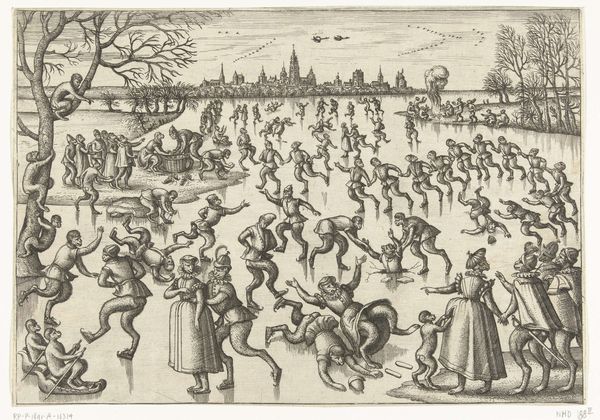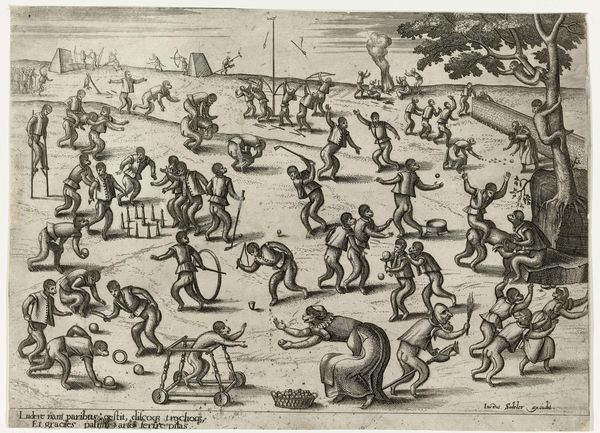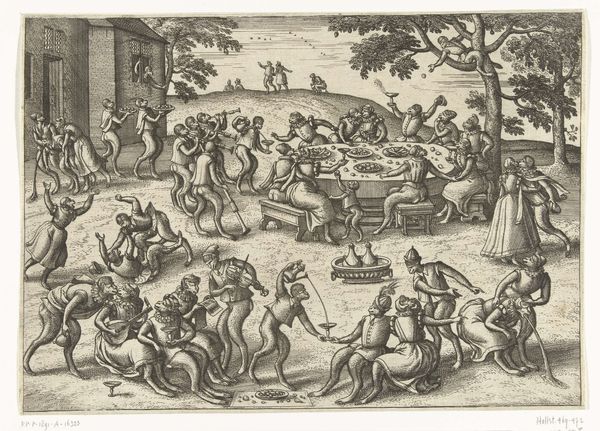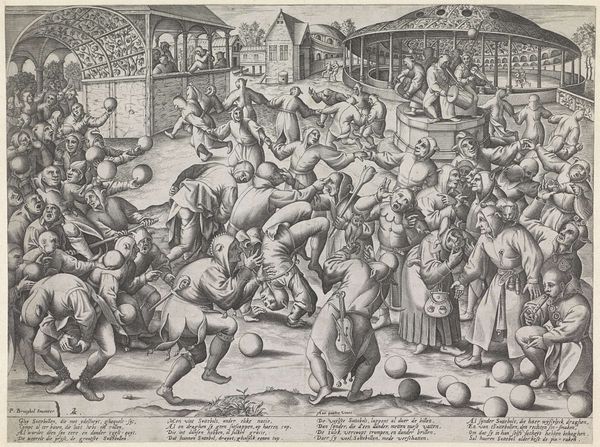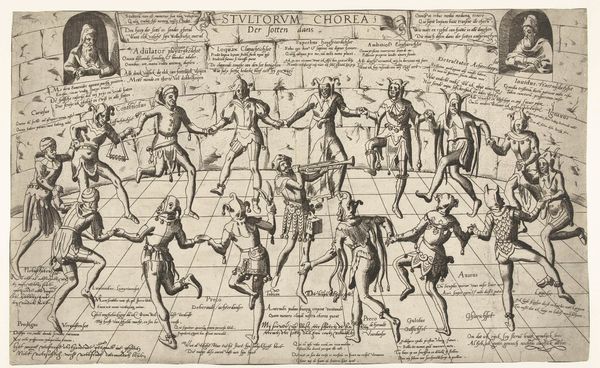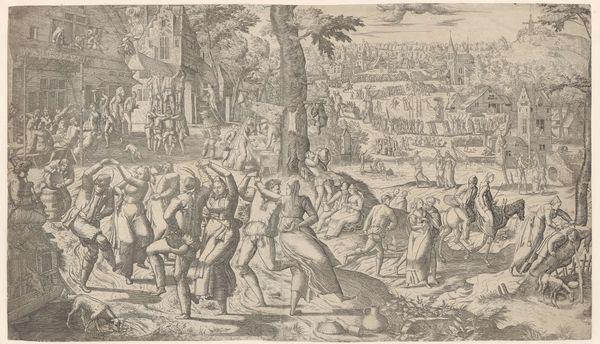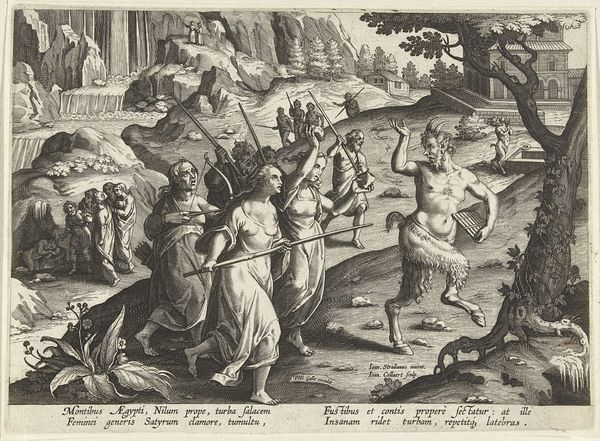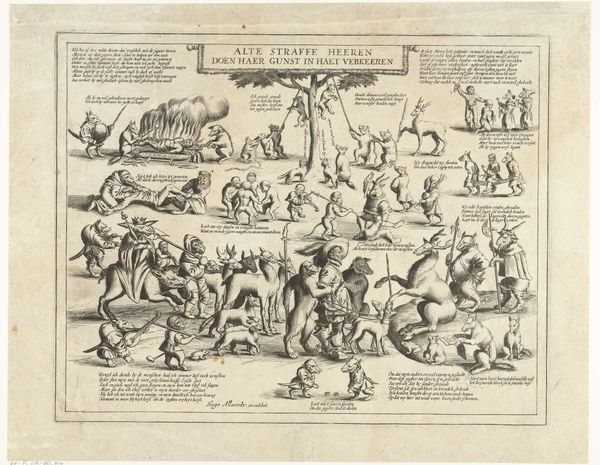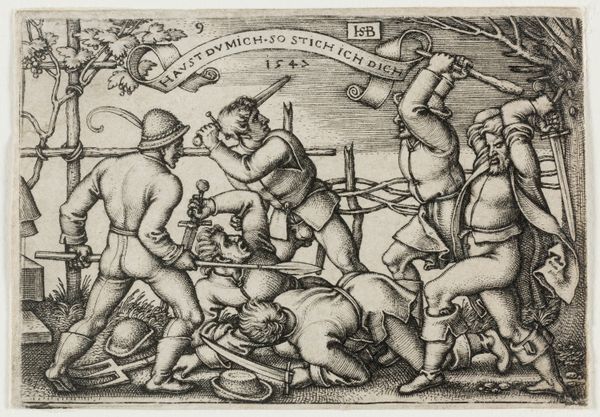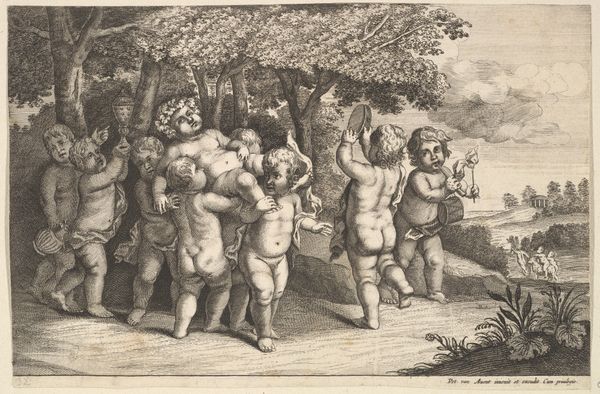
print, engraving
#
pen drawing
# print
#
landscape
#
mannerism
#
figuration
#
ink line art
#
pen-ink sketch
#
line
#
genre-painting
#
engraving
Dimensions: width 289 mm, height 207 mm
Copyright: Rijks Museum: Open Domain
Curator: This little print is entitled "Rondedans" by Pieter van der Borcht the Elder. The Rijksmuseum tells us it was likely created sometime between 1545 and 1608. What do you think? Editor: It's unsettling. These simian-human hybrids...they're like a glimpse into a fever dream, dancing away our collective anxieties or something equally dark. The pen and ink feel frantic, urgent. Curator: The medium here is actually an engraving. And yes, there is certainly an element of satire present. Notice the distinct classes of individuals depicted? You have the musicians making their craft on a tree, upper classmen in a villa’s windows, and regular simian folk going crazy on the foreground and background. Editor: Craft, precisely. Look at the labor involved, meticulously rendering each figure and element. What sort of social conditions foster the need to create a mirror like this, to laugh—or grimace—at the simian versions of ourselves? Was it a kind of "men behaving badly" gag, critiquing human tendencies toward self-destruction and irrationality? Curator: Van der Borcht clearly revels in line, that’s one clue. Just observe the almost obsessive detail given to their furry forms. You know, art historians see influences from Pieter Bruegel the Elder here – that same slightly cruel eye turned on humanity’s follies. And that eye does point to what can be defined as the folly and irrationality in men, especially in social endeavors! Editor: The materiality echoes the message. An engraving allows for mass production. Making accessible this dark humor to a broader audience. Imagine this hanging in someone's home – a constant reminder of...what? The bestial nature of humankind? Is that a judgement or is it a warning? Curator: A little of both, perhaps! Pieter the Elder, in bringing the tools of engraving and a Mannerist aesthetic to bear on genre painting, reveals the social structures, and also a little existential questioning underneath the skin – so to speak! Editor: It's a fascinating reflection, really, even today. The layers of commentary make it perversely thought-provoking. Curator: Yes. It’s a small work, but with an almost grotesque resonance. Art that holds up an imperfect, yet somehow compelling mirror to our natures.
Comments
No comments
Be the first to comment and join the conversation on the ultimate creative platform.
